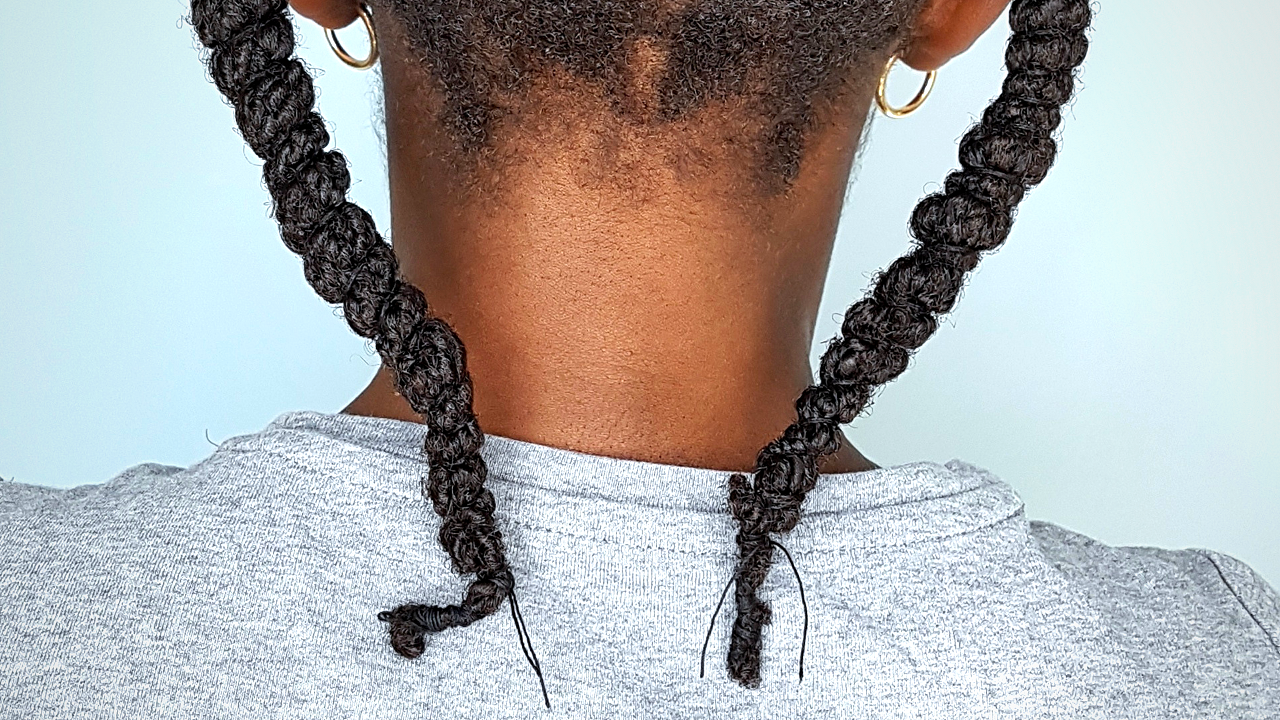If you follow me on Instagram, you know that I’m a big believer in finger detangling my 4c hair. Finger detangling has been a game changer in my hair care routine! It has allowed me to consistently retain my length. By using my fingers, I’m able to protect my delicate 4c textured hair from mechanical damage caused by traditional combs.
What is Finger Detangling?
The term “finger detangling” describes the process of untangling, removing shed hair, and arranging your hair just as you would with a traditional comb. Also known as “finger combing”, this process can be beneficial to those with kinkier and coilier hair types – especially those with 4c hair.
Benefits of Finger Detangling 4c Hair
Often when we use a traditional comb or brush, we run the risk of excessively damaging our hair. The teeth of the comb or the bristles of the brush may be too sharp or close together to allow the tools to glide through our strands.
However, when we use our fingers, we become more perceptive to the amount of tension we’re putting on our hair. We can feel where the knots are and gently work them out instead of blindly ripping them out with the comb.
I also find that finger combing allows me to distribute sebum along the length of my hair. Sebum is the natural oils produced by our scalp and it helps to keep my hair soft and pliable.
https://www.instagram.com/p/BjJId_8nifR/?hl=en&taken-by=fromato4z
How to Finger Detangle 4c Hair
Finger detangling is not for everyone. It requires a lot of time and patience. The process cannot be rushed otherwise you can cause just as much damage to your hair as if you used a comb.
To start the process, you must first lightly mist your hair with water or a liquid moisturizer of your choice. Moisturizing your hair prepares your strands for manipulation, by reducing the opportunity for breakage during the process.
Next, gently divide your hair into small sections. You will work through each section one at a time until the detangling process is complete. (TIP: I often use this process when transitioning from one set of protective twists or braids, to another. This allows me to work with small sections without getting overwhelmed.)
Starting at the ends of your hair, slowly separate the sections untangling the strands and removing shed hair as you go. When you encounter any knots, slowly and carefully remove each strand attached to the knot until either the knot gives way completely or until it cannot be reduced any further. If you’re left with a smaller knot, take out your hair scissors and snip the hairs as close to the knot as possible, so that you can preserve as much of the length of the strand that you can.
The Learning Curve
I first tested out this method on my then, neck length (NL) hair, but I found the process was slow and daunting. I couldn’t quite get the hang of it and I didn’t understand why people were raving about this process. After a time, I tried again on shoulder length (SL) hair and it was a different experience! I was able to use my fingers to detangle my hair in a way that I previously thought wasn’t possible. Looking back, I’m glad that I decided to give finger combing a second chance.
Like with any new skill, time and practice help to build speed and success. Once you get the hang of it, finger detangling 4c hair is rewarding! By reducing your use of traditional combs and brushes, your hair will thrive and retain length and thickness!
Do you finger detangle your hair? Why or why not?




